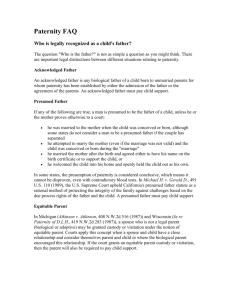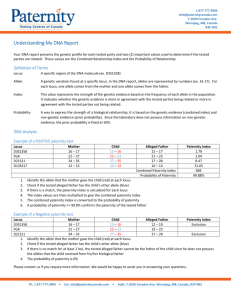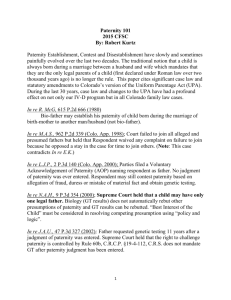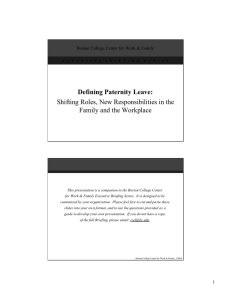SOMEBODY`S CHILD: EVALUATING THE EROSION OF
advertisement
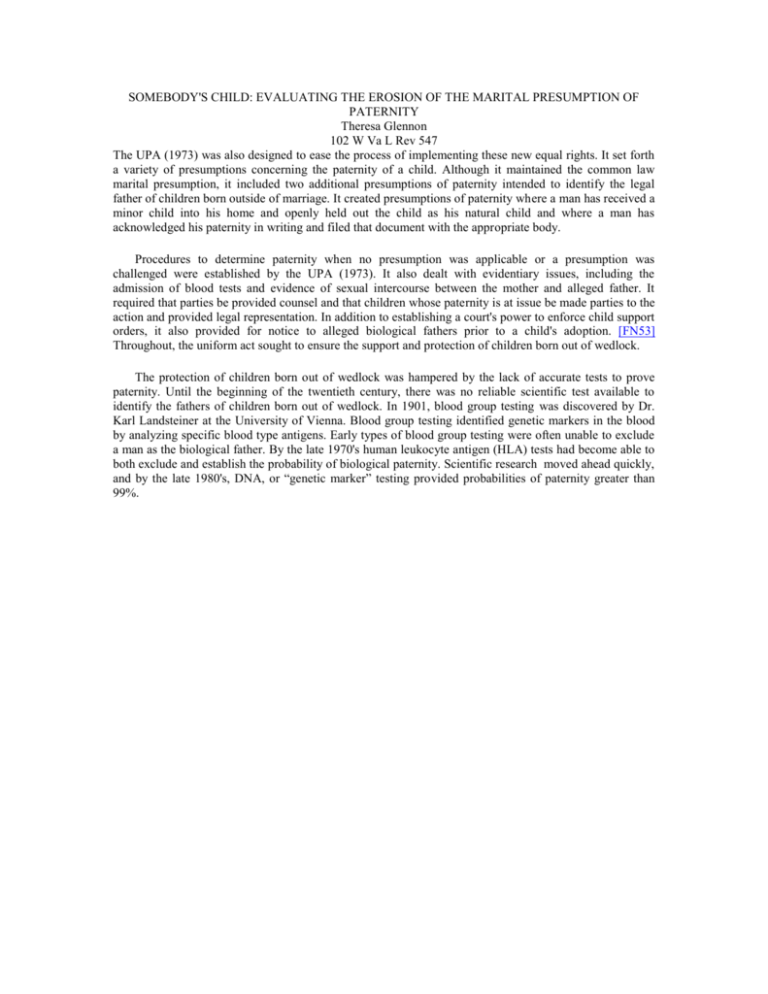
SOMEBODY'S CHILD: EVALUATING THE EROSION OF THE MARITAL PRESUMPTION OF PATERNITY Theresa Glennon 102 W Va L Rev 547 The UPA (1973) was also designed to ease the process of implementing these new equal rights. It set forth a variety of presumptions concerning the paternity of a child. Although it maintained the common law marital presumption, it included two additional presumptions of paternity intended to identify the legal father of children born outside of marriage. It created presumptions of paternity where a man has received a minor child into his home and openly held out the child as his natural child and where a man has acknowledged his paternity in writing and filed that document with the appropriate body. Procedures to determine paternity when no presumption was applicable or a presumption was challenged were established by the UPA (1973). It also dealt with evidentiary issues, including the admission of blood tests and evidence of sexual intercourse between the mother and alleged father. It required that parties be provided counsel and that children whose paternity is at issue be made parties to the action and provided legal representation. In addition to establishing a court's power to enforce child support orders, it also provided for notice to alleged biological fathers prior to a child's adoption. [FN53] Throughout, the uniform act sought to ensure the support and protection of children born out of wedlock. The protection of children born out of wedlock was hampered by the lack of accurate tests to prove paternity. Until the beginning of the twentieth century, there was no reliable scientific test available to identify the fathers of children born out of wedlock. In 1901, blood group testing was discovered by Dr. Karl Landsteiner at the University of Vienna. Blood group testing identified genetic markers in the blood by analyzing specific blood type antigens. Early types of blood group testing were often unable to exclude a man as the biological father. By the late 1970's human leukocyte antigen (HLA) tests had become able to both exclude and establish the probability of biological paternity. Scientific research moved ahead quickly, and by the late 1980's, DNA, or “genetic marker” testing provided probabilities of paternity greater than 99%.



